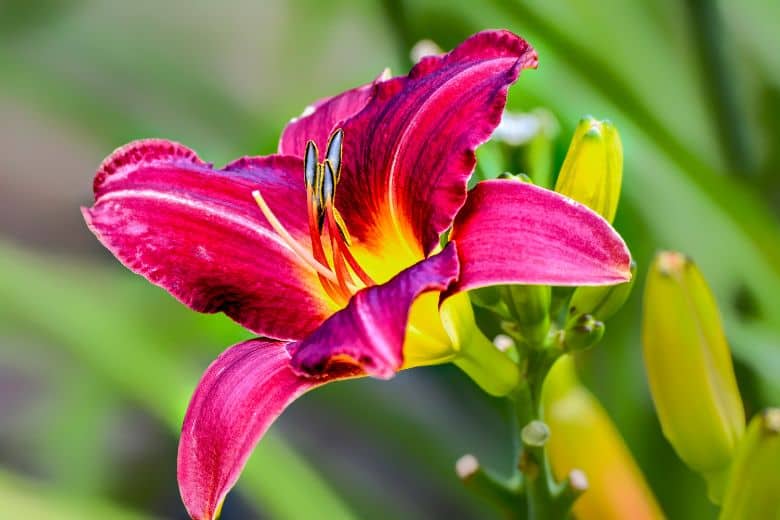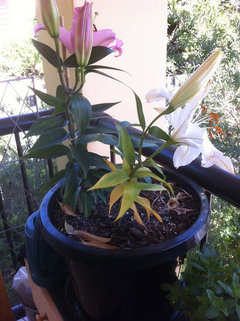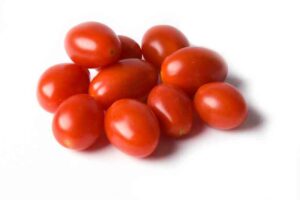
Oriental lilies are stunning flowers that add beauty and color to any garden. However, if the leaves of your Oriental lilies start to turn yellow, it can be an indication of a problem.
Yellowing leaves can be caused by a variety of factors, including nutrient deficiencies, environmental stress, and disease. Understanding the causes of yellow leaves and taking the necessary steps to correct the problem can help you restore your Oriental lilies to their former glory.
Causes of Yellowing Oriental Lily Leaves
The beautiful Oriental Lily is a popular choice for gardeners due to its gorgeous white and pink flowers. Unfortunately, many gardeners experience yellowing leaves on their Oriental Lily plants.
- Overwatering or Underwatering: Both conditions can stress the plant and cause the leaves to yellow. Overwatering can cause root rot, which leads to yellow leaves. Underwatering can cause dehydration, also leading to yellow leaves.
- Poor Drainage: Oriental Lilies need well-drained soil. If water can’t drain properly, the lilies’ roots can become waterlogged and oxygen-starved, leading to root rot and yellowing leaves.
- Nutrient Deficiency: Plants require certain nutrients to thrive, and a deficiency can cause yellowing leaves. For lilies, a lack of nitrogen or iron is often the cause.
- Pests or Disease: Various pests (like aphids or lily beetles) and diseases (like Botrytis blight or Fusarium oxysporum) can cause yellowing of the leaves.
To correct the problem, you need to identify the cause and address it. This might mean adjusting your watering practices, improving drainage, feeding your plant with a balanced fertilizer, or treating it for pests or diseases. If you’re unsure about what’s causing the problem, consider seeking advice from a local nursery or extension service.
Diagnosing the Cause of Yellowing Oriental Lily Leaves
Oriental lilies are a popular choice for brightening up any garden or home, but what do you do when their leaves start yellowing?
To diagnose the cause of yellowing leaves on Oriental lilies, there are several factors to consider. Is the soil too wet or too dry?
Are there any signs of disease or pest infestation? Too much fertilizer can also be a factor. Knowing the answers to these questions can help you determine the cause of the yellowing leaves and how to correct the issue.
With proper care, your Oriental lilies can remain vibrant and healthy for years to come.
Effects of Yellowing Oriental Lily Leaves
Yellowing leaves on an Oriental Lily, or any plant, can be an indication of several problems. Understanding the potential causes is the first step in addressing the issue and helping your plant regain its health. Here are the potential effects of yellowing Oriental Lily leaves:
- Reduced Photosynthesis: The primary function of leaves is photosynthesis, the process of converting light into energy for the plant. Yellowing leaves may indicate a decrease in chlorophyll, the pigment responsible for photosynthesis. This can lead to reduced energy production and a decline in the plant’s overall health.
- Stunted Growth: The plant’s growth may be stunted because it cannot photosynthesize effectively due to the lack of green leaves. This can lead to smaller flowers or no flowers at all, which is especially significant for a flowering plant like an Oriental Lily.
- Reduced Plant Vigor: A plant with yellowing leaves is not in its best health. This could make it more susceptible to diseases and pests. Healthy, well-nourished plants can often resist or tolerate some disease and insect issues better than stressed plants.
- Potential Death of the Plant: If the cause of the yellowing leaves is not identified and corrected, it can lead to the death of the plant. The yellowing leaves could be an indication of a serious problem, like root rot or a severe nutrient deficiency.
Prevention of Yellowing Oriental Lily Leaves
Maintaining the overall health of your Oriental Lily plants is key in preventing leaf yellowing. Here are some preventive measures you can take:
- Proper Watering: Oriental Lilies prefer soil that is moist but well-drained. Overwatering or underwatering can both lead to yellow leaves. It’s important to water deeply but infrequently, allowing the top inch of soil to dry out between watering. However, adjust watering practices based on your local weather conditions, and avoid letting the lilies stand in water, which can lead to root rot.
- Soil and Fertilizer: Plant your lilies in well-draining soil. Consider using a balanced slow-release fertilizer to provide your plants with the necessary nutrients. This is particularly important in the spring and early summer when plants are in their active growth period. Overfertilization, however, can also cause problems, including yellow leaves, so always follow package directions.
- Light and Temperature: Oriental Lilies need full sun or partial shade to thrive. Make sure they are planted in a location that meets their light requirements. Additionally, they prefer cooler root zones, so consider mulching around the base of the plant to help keep roots cool and retain soil moisture.
- Disease and Pest Management: Regular inspection of your plants can help catch disease or pest issues early before they cause significant damage. Remove any yellow or diseased leaves immediately to prevent the spread of illness. Use appropriate pest controls as needed, but be careful not to overuse chemical pesticides, as they can also harm beneficial insects.
- Proper Spacing: When planting lilies, make sure they are adequately spaced (usually about a foot apart) to allow for good air circulation. This helps prevent fungal diseases that can cause yellow leaves.
- Rotation of Planting Site: If possible, don’t plant lilies in the same location year after year. Crop rotation can help prevent the buildup of disease organisms in the soil.
- Clean Up in Fall: At the end of the season, clean up and dispose of all plant debris in the area. Many diseases can overwinter in fallen leaves and debris, so good cleanup can prevent problems next year.
In general, the best prevention is a combination of good cultural practices, regular inspection, and immediate attention to any problems that arise. Keeping your plants healthy and stress-free will make them more resistant to pests and diseases that can cause yellow leaves.

Treatment of Yellowing Oriental Lily Leaves
The treatment for yellowing Oriental Lily leaves depends on the underlying cause of the problem. Here are a few common issues and their treatments:
- Overwatering or Underwatering: If you suspect that improper watering is causing yellow leaves, adjust your watering practices. Allow the soil to dry out slightly between watering and never let the plants sit in water. Remember that overwatering often does more harm than underwatering.
- Poor Drainage: If water is not draining properly, you might need to move the plant to a location with better drainage. This could involve amending the soil with organic matter or sand to improve its structure, or planting the lilies in raised beds to ensure excess water drains away from the roots.
- Nutrient Deficiency: If you suspect a nutrient deficiency is causing the yellow leaves, you may need to fertilize your lilies. Use a balanced slow-release fertilizer and follow the package instructions to avoid over-fertilization. A soil test can help you identify specific nutrient deficiencies.
- Pests or Disease: Treat pests or diseases as soon as you notice them. This might involve removing and destroying infected plant parts, applying a fungicide or pesticide, or using an insecticidal soap or horticultural oil for pests. Be sure to identify the specific pest or disease so you can choose the most effective treatment.
- Environmental Stress: If the yellowing is caused by environmental stress like extreme temperature swings or too much sun, you might need to move the plant to a location where it can receive more appropriate conditions.
In all cases, remember that healthy plants are more resistant to pests and diseases. Regular care and attention to your plants’ needs can go a long way toward preventing problems before they start. If you’re unsure about what’s causing the yellowing leaves, consider consulting a local nursery or extension service for advice. They might be able to help you identify the problem and recommend specific treatments.
FAQs About the Why Are My Oriental Lily Leaves Turning Yellow
Could under-watering be the cause of my Oriental Lily leaves turning yellow?
Answer: Yes, under-watering your Oriental Lily can cause its leaves to turn yellow. Make sure to give your lily enough water, but don’t over water it either.
Could an over-abundance of fertilizer be the cause of my Oriental Lily leaves turning yellow?
Answer: Yes, an over-abundance of fertilizer can cause your Oriental Lily leaves to turn yellow. Make sure to fertilize your lily according to the instructions on the package.
Could my Oriental Lily leaves be turning yellow due to disease or insects?
Answer: Yes, disease or insects can cause your Oriental Lily leaves to turn yellow. Check the leaves for signs of disease or insects and take appropriate steps to treat them if necessary.
Conclusion
In conclusion, yellowing of Oriental Lily leaves can be caused by a variety of factors, including nutrient deficiencies, overwatering, disease, or pests. Identifying the cause of yellowing leaves and taking appropriate action is key to keeping Oriental Lilies healthy. If the yellowing persists, it is best to consult with a professional to ensure the lily’s health.





